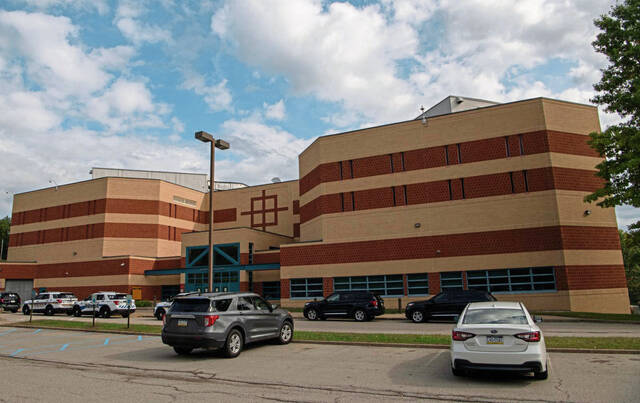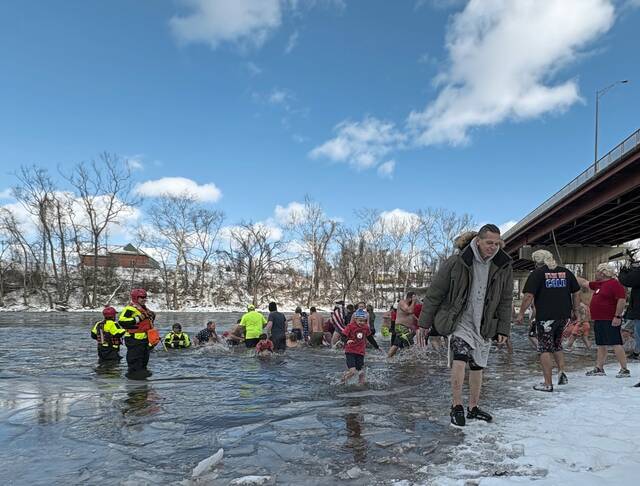As education experts in Pennsylvania go, it’s tough to top Ron Cowell.
In addition to 24 years as a state representative with 12 years on the House Committee on Education, Cowell has been president and executive director for the Education Policy and Leadership Center in Harrisburg since 1999. He has been a member of the National Education Goals Panel and held leadership positions with the Education Commission of the States, the National Association of State Boards of Education and more.
Cowell will present “The State of Education in Pennsylvania” at the Jan. 9 meeting of the Murrysville American Association of University Women. It will be at 9:30 a.m. in the Murrysville Community Library’s meeting room at 4130 Sardis Road. The public is invited, and registration is not required.
“There are many school and student success stories all over Pennsylvania every year,” Cowell said. “But the greatest challenge is for schools to successfully educate a high percentage of students in communities where there is a high concentration of poverty.”
Cowell discussed regional education issues recently with the Star. This interview has been edited/condensed for length.
Q: As a member of so many groups focused on education, what is the state of education in Pennsylvania, particularly compared with the rest of the country?
A: We do know Pennsylvania’s high school graduation rate has been improving. But the most recent results reported from the National Assessment of Educational Progress (NAEP) test (administered every two years and known as the “nation’s report card”) present a mixed and concerning picture.
We generally are above the national average in reading and math at grades 4 and 8. But while math scores for Pennsylvania’s 8th graders are pretty steady, reading scores are down. And the performance gap among various sub-groups is persistent and significant.
Beyond the national and statewide information, the Future Ready PA Index on the PA Department of Education website is a valuable tool to look at individual school performance. The index reports state test results but also incorporates a wider range of criteria such as career awareness activities, advance placement course offerings, and dual enrollment opportunities with higher education institutions.
Q: What do you feel should be the legislature’s top priority when it comes to education in Pennsylvania?
A: The most important issue that the Pennsylvania Legislature needs to address is the inadequate state support for public education. We have a K-12 funding system that is excessively dependent on local wealth and local taxes. The share of K-12 costs paid by state government ranks in the bottom five nationally. As a result, we depend far more than the national average on property taxes to support K-12 education, and subsequently have the greatest resource gap in the country between financially wealthy and poorer districts and the opportunities for their respective students.
Money is not a cure-all, but money does matter. Inadequate state funding makes a difference for local taxpayers and for students. PA also ranks in the bottom five states in state support for higher education (based on per capita) and therefore has the highest public education tuition rates in the country.
Q: Many school districts have had to deal with a budget crunch due to steadily increasing teacher-pension/retirement contributions — does the EPLC deal at all with how that sort of thing can be mitigated, and if so, how?
A: The root of the dramatic increase in state-mandated increases in school district retirement contributions is found in state policy – a time when state and district annual payments were less than they should have been, and a 25% increase in prospective benefits for then current state and school employees that was enacted at the end of Gov. Tom Ridge’s administration.
The legislature did change and reduce the benefits available to those new to the pension systems in 2019 and forward, but there remains a constitutionally-protected obligation to pay benefits, and therefore fund the system, for those who earned pension benefits previously. It is not likely that the Legislature will do anything to reduce current contribution obligations because the options would make the ultimate cost to taxpayers even greater. The current annual impact on school district budgets has been exacerbated by the state being so stingy in its funding support for school districts.
Q: Is the EPLC working to emphasize the importance of (and demand for) trade jobs?
A: In 2016, EPLC published a report about Career and Technical Education (CTE) with more than 40 recommendations aimed at state and local education policymakers as well as the larger community. The report emphasized the value of CTE and its link to workforce development in Pennsylvania. It highlighted some activities such as WCCC’s Advanced Technology Center in New Stanton and the Westmoreland County Forum on Workforce Development. EPLC continues to work with the many partners who contributed to the Report to support initiatives of the General Assembly and the Wolf Administration to prioritize CTE as part of the Commonwealth’s workforce development strategies.








